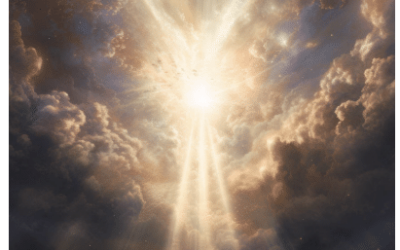The one in the many is a philosophical problem that has existed for about 2500 years. It deals with how unity and diversity coexist in the universe. There are different ways of discussing the problem. 1) Is the ultimate nature of reality one substance or many different substances? 2) What is the relationship between unity (the one) and diversity (the many)? 3) How are individual objects (chairs and trees) and phenomena (redness and tallness) related? 4) How do universal concepts and categories relate to particular objects and phenomena? 5) How do individual objects and phenomena remain distinct while sharing common characteristics?
Let’s take chairs and trees as an example. Are all chairs and trees merely variations of the one ultimate substance? Or, are all chairs and trees actually comprised of different substances like chairness and treeness? So, when we see clouds, water, cats, rocks, fish, and stars, are they all merely different manifestations of the same essence, the ‘single universal stuff’? Or are they actually manifestations of different things like cloudiness, wetness, catness, rockness, fitness, redness, and starkness? This is a perplexing problem for philosophers.
Problem of the One and the Many: One Substance
If the ultimate nature of reality is one thing, then there’s no true distinction between objects and phenomena. They would be variations of the same thing. This implies that our perception and understanding might be flawed since we do not see the same substance but a variety of properties and characteristics of that one substance. The question then arises: What is the principle of unity between objects and phenomena with different characteristics, such as redness, wetness, and treeness?
Furthermore, it isn’t easy to maintain truth statements since truth requires an understanding of distinctions between objects. So, if I say, “The red chair is next to the tall tree,” I am recognizing distinctions between objects (chairs and trees), their characteristics (redness and tallness), and their positional relationship (next to each other). Are all of these manifestations of the one substance? If so, then this confuses the distinction between objects and undermines truth values since there are ultimately no distinctions between objects and phenomena. This leads to incoherence.
Problem of the One and the Many: Many Substances
If plurality is ultimate, where the universe is a collection of different substances like cloudiness, wetness, catness, rockness, fitness, treeness, etc., then this undermines the unity between the objects and phenomena since it strips them of their interconnectedness, their unity.
Furthermore, this would mean that objects and phenomena are all separate ontological categories (Ontology deals with the ultimate nature of something). But if that’s the case, then there’s no coherence between all of these categories or particulars. And if there’s no coherence between them, then that also undermines truth values because statements require an understanding of proper relationships between objects. Remember the statement, “The red chair is next to the tall tree”? The truth statement requires an understanding of objects, characteristics, and relationships. If all these things are unrelated, how do we justify truth?
The Christian Trinity to the rescue
The problem with the one and the many is that it posits the ultimate nature of reality being one thing OR many things. They are set against each other. However, in the Christian doctrine of the Trinity, we do not say that reality is one thing OR many things. Instead, it is one thing AND many things. They are equally ultimate. This is because the Trinity is one Being AND three distinct persons. The Trinity is unity (God’s singular divine essence) and diversity (God’s three distinct persons). This provides a model of understanding reality because it proposes the one and the many are equal and should not be set against each other.
Furthermore, in the Christian Trinitarian perspective, the ultimate nature of reality reflects the ultimate nature of God which is both unity and diversity at the same time. One is not set against the other. In God, unity and diversity (one and many) are equally ultimate. Therefore, creation reflects His unity and diversity being equally ultimate.
Romans 1:20, “For since the creation of the world His invisible attributes, His eternal power and divine nature, have been clearly seen, being understood through what has been made, so that they are without excuse.”
Related Articles
- What is philosophy?
- Answers to Questions about Philosophy
- What is the Trinity?
- The Christian Trinitarian God Examined In Depth
- Philosophy: The Problem of the One and the Many







